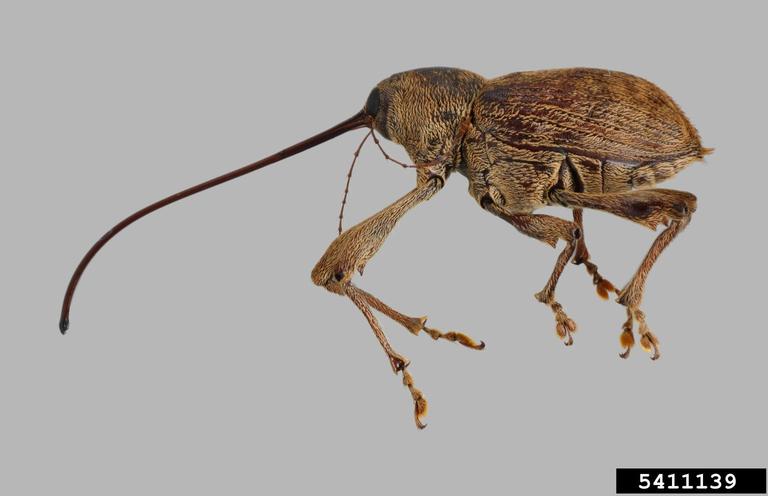“Have you seen The Judge?” Michael Parker, a fruit tree scientist from NC State University I’m interviewing asks me the week after my visit with Elbie.
“The Judge?”
I had not seen The Judge on my visit.
“Yeah, The Judge, the .410 pistol Elbie carries with him to scare crows.”
 For reference the .410 bore is a handgun that fires, albeit smaller than typical shells, shotgun shells nonetheless. Later Elbie mentioned to me that ,“I shot a total 12 cases of shells against crows and squirrels. Most all for scare tactics. That is 3,000 rounds total.”
For reference the .410 bore is a handgun that fires, albeit smaller than typical shells, shotgun shells nonetheless. Later Elbie mentioned to me that ,“I shot a total 12 cases of shells against crows and squirrels. Most all for scare tactics. That is 3,000 rounds total.”
“I almost have to plant one tree for myself and one tree for the crows.” He told me just a few second before a massive outburst of crow cawing in the distance. “One grower last year lost 6000 pounds to crows in three weeks, he only harvested 800 pounds.”
We share these pecans with numerous other organisms ranging from fungus to fowl.
When it comes to pecan pillagers, the usual suspect list reads like a list of military forces of the Allied Powers during World War II. Each one of these pests is seeking that nutritious nut practically begging to be eaten. A single squirrel can eat 14 pounds of pecans a month. A singe crow will consume a pound more than a squirrel per month. Even a small Bluejay will consume 7.5 pounds. Multiply that by the 3-4 months that the nuts are edible and you’re looking at anywhere from 22-56 pounds for each individual animal. During my conversation with Elbie I noted nearly three-dozen crows lingering around his property. This aptly named murder of crows has the potential to take over 2,000 pounds of pecans. At $10-15 a pound the loss is substantial. I can now see how The Judge earns his keep.
But firing shotgun shells will only scare away the larger pests. Against scab and weevils, shells are powerless. For that Elbie has Baby. At the edge of Elbie’s property is a dirt landing strip, at the end sits a small crop dusting plane, Baby. Elbie left college because he, “hated studying, reading and testing and decided to fly airplanes until old enough to know what I wanted to do for career.” He’s been crop dusting over the southern part of North Carolina ever since. He sprayed for both scab and another pecan pillager, the pecan weevil, Curculio caryae.
 Female pecan weevils will deposit their egg in a nut after the first major rain in August. Upon hatching, the larva feeds on the kernel for about 4-5 weeks. The larvae bore out of the nut by creating tiny hole. After plummeting to the ground the larvae will burrow 4 to 12 inches deep and mature in the soil. In about 14-16 months, the first adults can bee seen in the soil. Overall a complete generation can take 2-3 years. During this time the weevil will move less than 1-3 inches in the soil from the original point of soil infiltration. The adults emerge, eat pecans themselves, and mate to restart the cycle again. In one study the number of weevils per pecan tree was estimated to be over 6,000. An orchard the size of Elbie’s could contain as many as 4.5 million; about half the human population of North Carolina.
Female pecan weevils will deposit their egg in a nut after the first major rain in August. Upon hatching, the larva feeds on the kernel for about 4-5 weeks. The larvae bore out of the nut by creating tiny hole. After plummeting to the ground the larvae will burrow 4 to 12 inches deep and mature in the soil. In about 14-16 months, the first adults can bee seen in the soil. Overall a complete generation can take 2-3 years. During this time the weevil will move less than 1-3 inches in the soil from the original point of soil infiltration. The adults emerge, eat pecans themselves, and mate to restart the cycle again. In one study the number of weevils per pecan tree was estimated to be over 6,000. An orchard the size of Elbie’s could contain as many as 4.5 million; about half the human population of North Carolina.
The pecan weevil is one of many insect threats to pecans. Yellow and black pecan aphids, hickory shuckwork, fall webworm, a grey moth called the casebearer, the walnut caterpillar, the pecan leaf scorch mite, and Phylloxera–a tiny, soft-bodied insect closely related to aphids–can amass a full assault against pecan trees over the year. But between The Judge and Baby, Elbie seems to have it covered.
